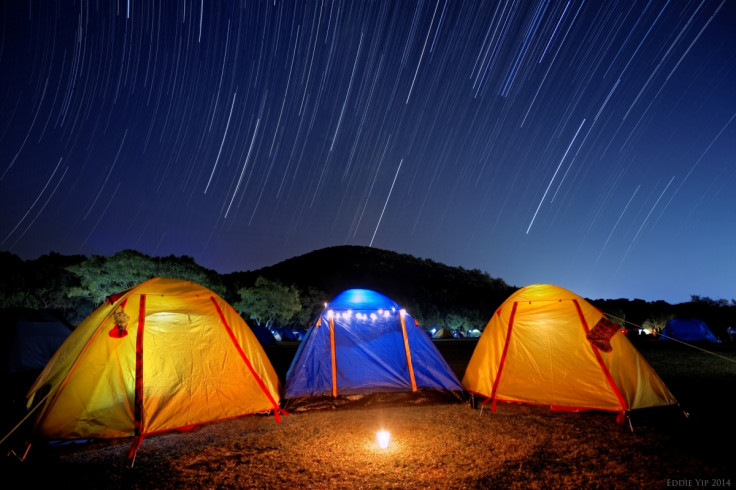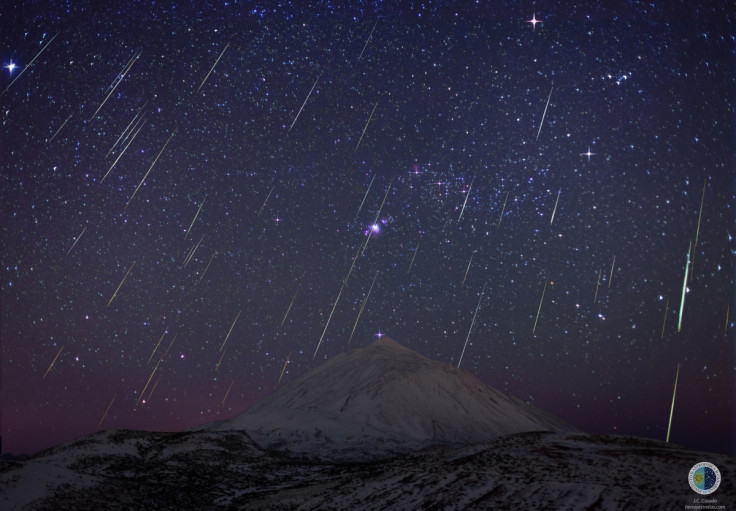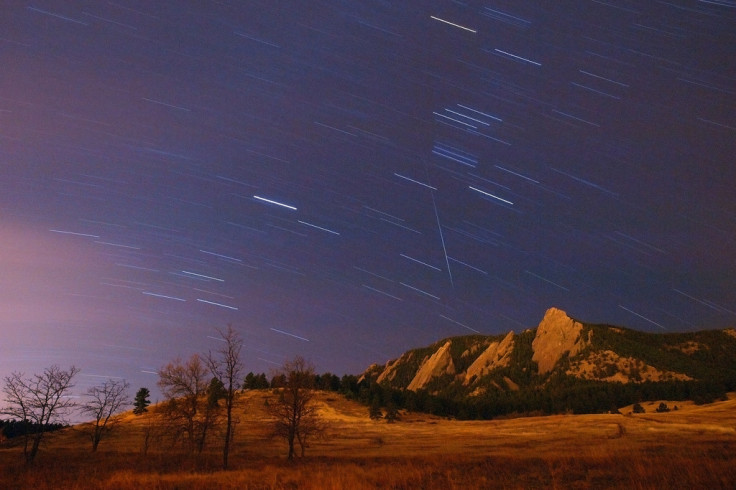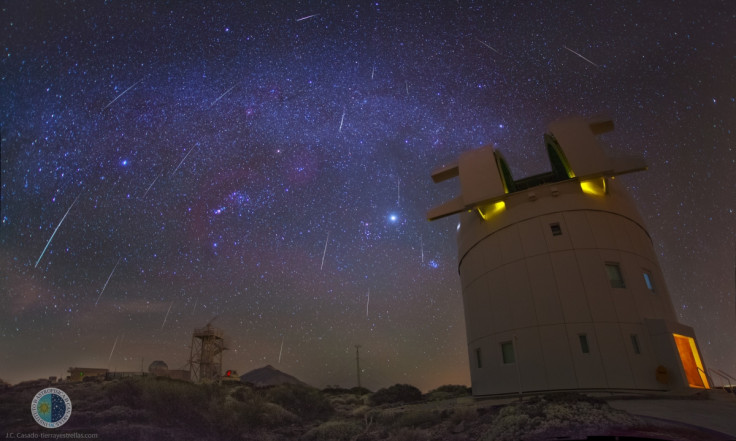Geminids 2015: Where to watch the meteor shower in the UK, US and live online

The most dramatic meteor shower of the year peaks this weekend, as the Geminids become visible overhead.
The 12 and 13 December is the best time for amateur astronomers to observe the Geminid meteor shower, with roughly 100 meteors per hour visible. The best time to view the shower will be around 2am on Monday morning, but if you don't fancy staying awake that late, they should still be visible around late evening.
The meteors vary in size – ranging from a single grain of salt to a small pebble – and generally weigh less than just two grams.
They originate from the asteroid 3200 Phaethon, which is about 3 miles wide. The asteroid is actually relatively small for an asteroid, despite the fact it would take about one hour to walk from one side to the other. Every year 3200 Phaethon moves very close to the Sun, which causes pieces of the rock to break off because of the intense heat. These fragments then enter Earth's upper atmosphere at about 80,000 miles per hour – more than 100 times the speed of sound – creating a blaze of colour as they shoot past.
For the best way to enjoy the meteor show, EarthSky recommends the countryside: "You need to get away from city lights and find a wide open view of the sky. Enjoy the comfort of a reclining garden chair – the warmth of a sleeping bag – a thermos with a hot drink – a snack – and possibly star maps with a red torch." They add: "Give your eyes at least 20 minutes to adapt to the dark. Often, meteors come in spurts and are interspersed by lulls. So give yourself at least an hour to watch the Geminids."
No special astronomical equipment is needed, just look up and relax.
Where to watch in UK cities

London
Slightly out of the city is best. Loughton is particularly light-pollution free, north-east of London, before the M25. Alternatively, the WaterWorks Nature Reserve is suggested as a good spot by Dark Sky Discovery. You can find the reserve close to Clapton and Leyton Midland Road train stations.
Birmingham
Barr Beacon is a local nature reserve, north of Birmingham and south-west of Walsall. It has full 360 degree views of the landscape, and is recommended by Dark Sky Discovery. Sutton Park is also ideal, close to Sutton Coldfield.
Manchester
Jodrell Bank Observatory is a great place to stargaze because of the lack of light pollution. Heaton Park is a good alternative, with astronomy sessions run by the Heaton Park Astronomy Group.
Cardiff
Brecon Beacons is one of the UK's darkest sky sites. Parc Penallta, just off the A470, is also a very good location, with great views of the night sky.
Newcastle
Around Northumbrian Water Group's Derwent Reservoir is a great, secluded spot to stargaze, just inside the Pennines. Cawfields in Northumberland National Park is also recommended by the Newcastle Astronomical Society.
Edinburgh
Across the estuary sits Dunfermline Public Park. The park has low level lighting and easily accessible parking. Dark Sky Scotland also recommends Newbattle Abbey College, which is just off the B703 Newbattle Road.
Belfast
The best place to view the meteor shower in Northern Ireland is the Oxford Island National Nature Reserve. Just a 30 minute drive away, this is the place to be.
Where to watch in US cities

New York City
Lots of artificial light make stargazing difficult in New York, but not impossible! The best spots include Inwood Hill Park, Upper Manhattan and Floyd Bennett Field in Brooklyn.
San Francisco
Twin Peaks Summit in the centre of the city provides great views of the night sky, overlooking the hills. If you're feeling more adventurous, try Lands End on the north-western side of the city.
Austin
St Edwards Park is north of Austin, heading towards Georgetown. The hills at the park make it ideal for stargazing. Alternatively, more centrally located in the Town Lake Metropolitan Parks.
Philadelphia
Two hours' drive from the city centre is Tuckahoe State Park, which is perfect for viewing the meteor shower. A second option for Pennsylvania would be The Cherry Springs State Park, close to the New York state border.
Illinois
The Hickory Knolls Discovery Center in St Charles is a good viewing location, as well as the Schaumburg Park District.
Seattle
Solstice Park on the west side of Seattle has an open sky, and trails without any artificial light. Green Lake Park is central to the city and is available for stargazing all night.
San Antonio
Just 20 minutes away from the city centre is Lower Bee Tree Soccer Field. The San Antonio Astronomical Association meets here, in the parking lot at McAllister Park.
Where to watch live online

Slooh is once again broadcasting the meteor shower from its partners' live feeds. Tune in from 1am GMT on 14 December.
Nasa is also engaging with the public on morning of 14 December, as astronomer Bill Cooke, from the Meteoroid Environment Office, will be available to answer questions about the meteor shower via Twitter. Tweet your questions to @NASA_Marshall, or use the hashtag #askNASA between 4am and 8am GMT.
© Copyright IBTimes 2025. All rights reserved.






















